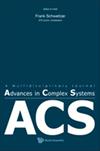基于DE-XGBoost的静态汉语手语识别多传感器融合方法
IF 1
4区 数学
Q4 MATHEMATICS, INTERDISCIPLINARY APPLICATIONS
引用次数: 0
摘要
静态汉语手语识别(SCSLR)是人机交互和辅助技术的一个重要研究领域。传统的SCSLR方法通常依赖于计算机视觉传感器,容易受到手的形状、光照条件和遮挡等影响,导致识别精度较低。此外,基于传感器的SCSLR方法由于手势信息有限,无法达到较高的识别精度。本文提出了一种多传感器融合方法,利用DE-XGBoost模型,融合手势信息和手指曲率信息来实现SCSLR,克服了由于手语信息不足而导致的识别误差问题。此外,我们设计并实现了一个由智能手机和智能手套组成的原型系统,与支持向量机(SVM)、XGBoost、gcForest和人工神经网络(ANN)进行比较,以评估我们提出的方法。实验结果表明,该方法在精度、鲁棒性和实时性方面都取得了较好的效果。本文章由计算机程序翻译,如有差异,请以英文原文为准。
A multi-sensor fusion method for static Chinese sign language recognition using DE–XGBoost
Static Chinese Sign Language Recognition (SCSLR) is an important field of research in human–computer interaction and assistive technology. Traditional SCSLR methods usually rely on computer vison sensors, which are susceptible to effects such as hand shapes, lighting conditions, and occlusions, resulting in low recognition accuracy. Additionally, sensor-based SCSLR methods cannot achieve high recognition accuracy due to limited hand gesture information. In this paper, we propose a multi-sensor fusion method, using a DE–XGBoost model, to fuse the information of hand gesture and finger curvature to achieve the SCSLR, which can overcome the recognition error problems caused by insufficient sign language information. In addition, we design and implement a prototype system, which consists of a smartphone and a smart glove, to evaluate our proposed method in comparison with support vector machine (SVM), XGBoost, gcForest, and artificial neural network (ANN). Experimental results show that our proposed method achieves a better performance in terms of accuracy, robustness, and real-time processing.
求助全文
通过发布文献求助,成功后即可免费获取论文全文。
去求助
来源期刊

Advances in Complex Systems
综合性期刊-数学跨学科应用
CiteScore
1.40
自引率
0.00%
发文量
121
审稿时长
6-12 weeks
期刊介绍:
Advances in Complex Systems aims to provide a unique medium of communication for multidisciplinary approaches, either empirical or theoretical, to the study of complex systems. The latter are seen as systems comprised of multiple interacting components, or agents. Nonlinear feedback processes, stochastic influences, specific conditions for the supply of energy, matter, or information may lead to the emergence of new system qualities on the macroscopic scale that cannot be reduced to the dynamics of the agents. Quantitative approaches to the dynamics of complex systems have to consider a broad range of concepts, from analytical tools, statistical methods and computer simulations to distributed problem solving, learning and adaptation. This is an interdisciplinary enterprise.
 求助内容:
求助内容: 应助结果提醒方式:
应助结果提醒方式:


